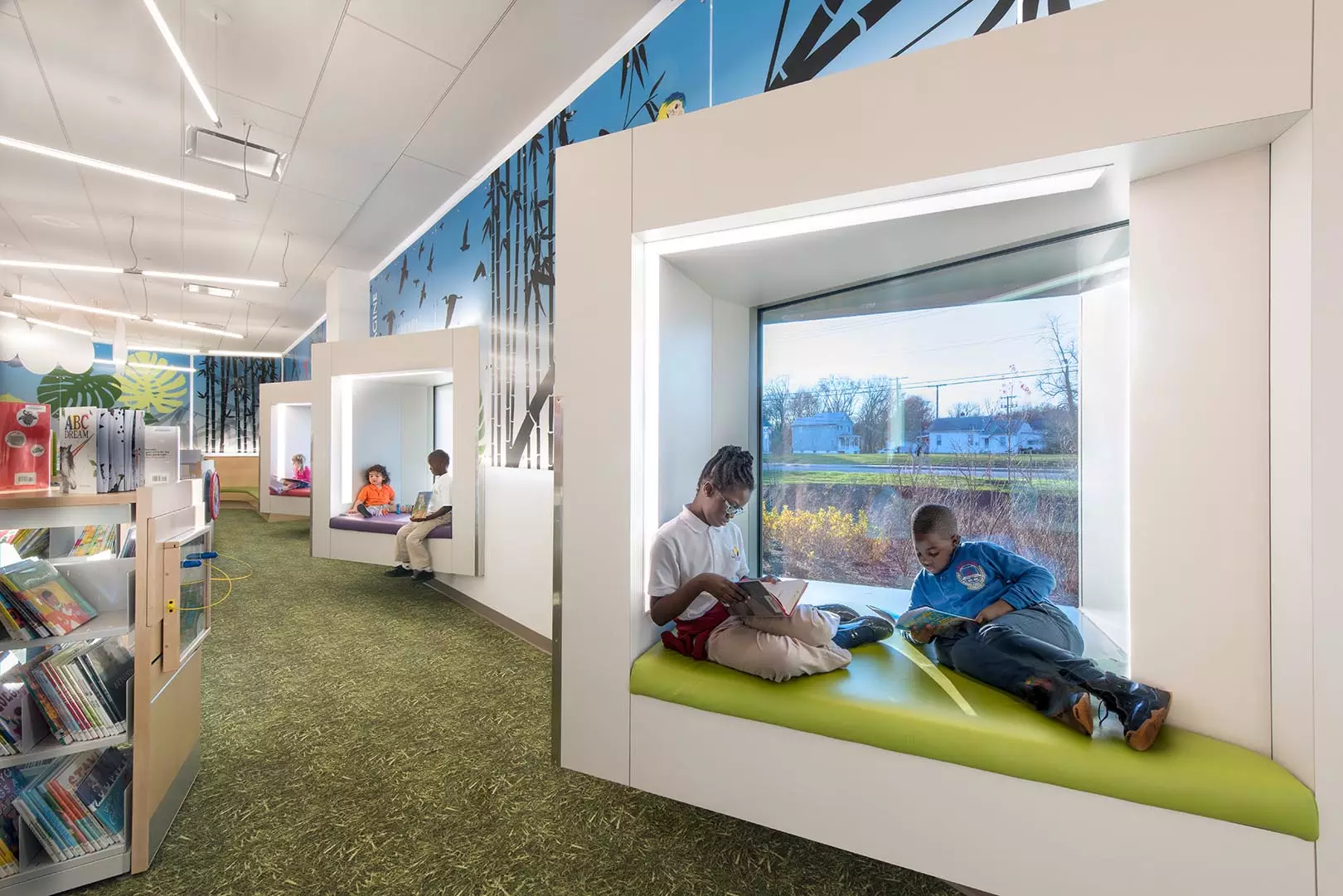The American Institute of Architects (AIA) and the American Library Association (ALA) are awarding six libraries with the 2018 AIA/ALA Library Building Awards for excellence in architectural design.
Traditional roles of libraries are evolving. Today, libraries are designed with larger gathering spaces to support the needs of the community and many include sustainable features to conserve water or energy. Both of these trends are reflected by this year’s AIA/ALA Library Building Award recipients.
Award recipient projects were selected by a six-member jury. This year’s jury included Daria Pizzetta, FAIA (Chair), H3 Hardy Collaboration Architecture, LLC; Sara A. Bushong, Bowling Green State University; Patrick Deaton, AIA, North Carolina State University Libraries; Terri M. Luke, Wake County Public Library, Cary, North Carolina; Christopher Noll, AIA, Noll & Tam Architects and Lisa Lintner Valenzuela, Johnson County Public Library, Franklin, Indiana.
The 2018 AIA/ALA Library Building Awards recipients are:
Austin Central Library; Austin, Texas | Lake Flato + Shepley Bulfinch
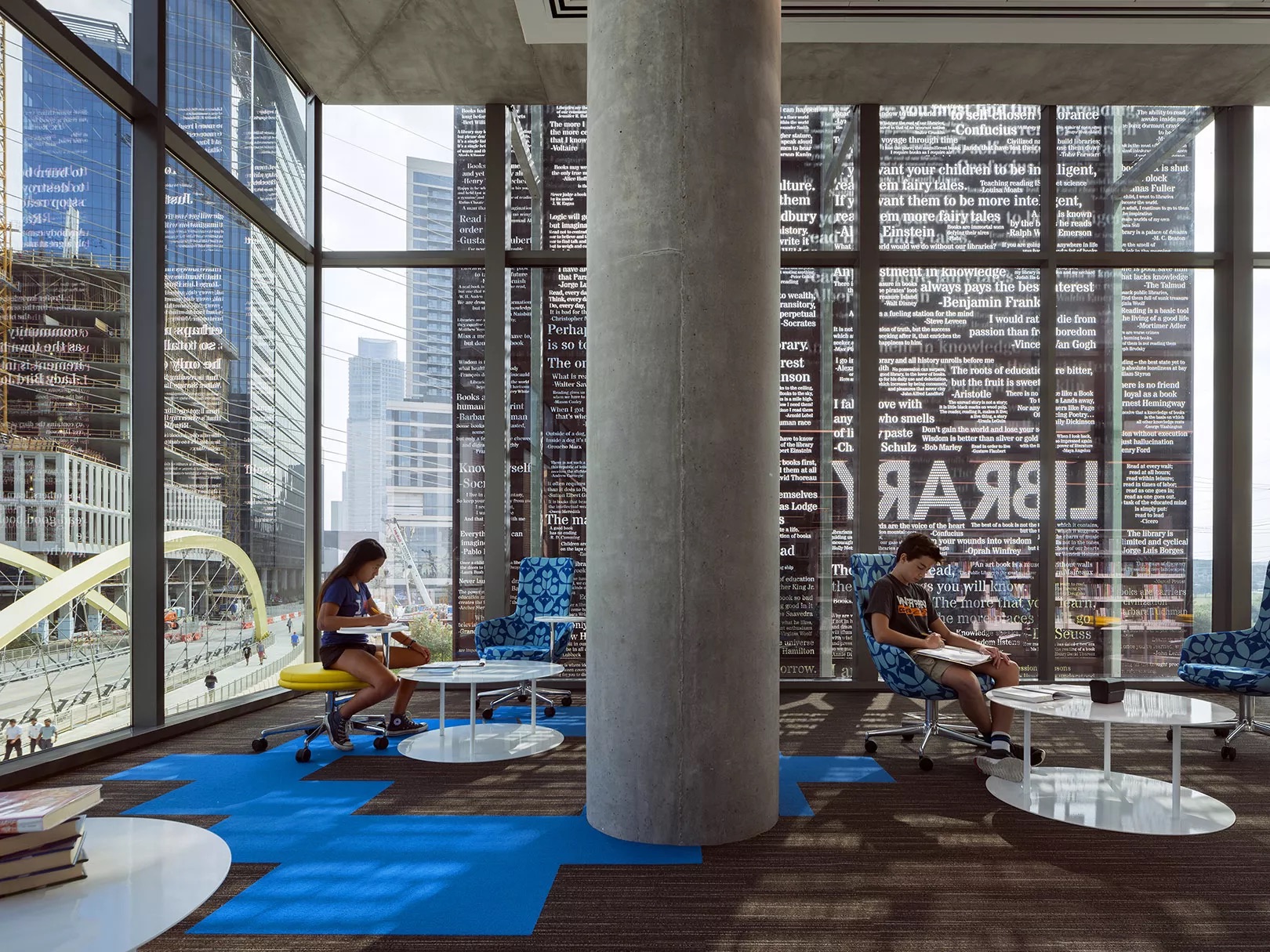
A technologically rich hub for innovation and cultural intelligence, the Austin Central Library has created a framework for lifelong learning that bolsters a more resilient community. Arguably the most daylit library in the nation, the nearly 200,000-square-foot building is defined by a light-soaked, six-story atrium surrounded by the book collections and event space. On track for LEED Platinum certification, the building respects the library system’s desire to be good stewards of water resources in an area of Texas that regularly experiences drought and is subjected to water restrictions. A 373,000-gallon cistern captures roof rainwater and HVAC condensate, which provides water in the restrooms as well as irrigation for the landscape and vegetated roof. Photo: Nic Lehoux via AIA
Eastham Public Library; Eastham, Massachusetts | Oudens Ello Architecture
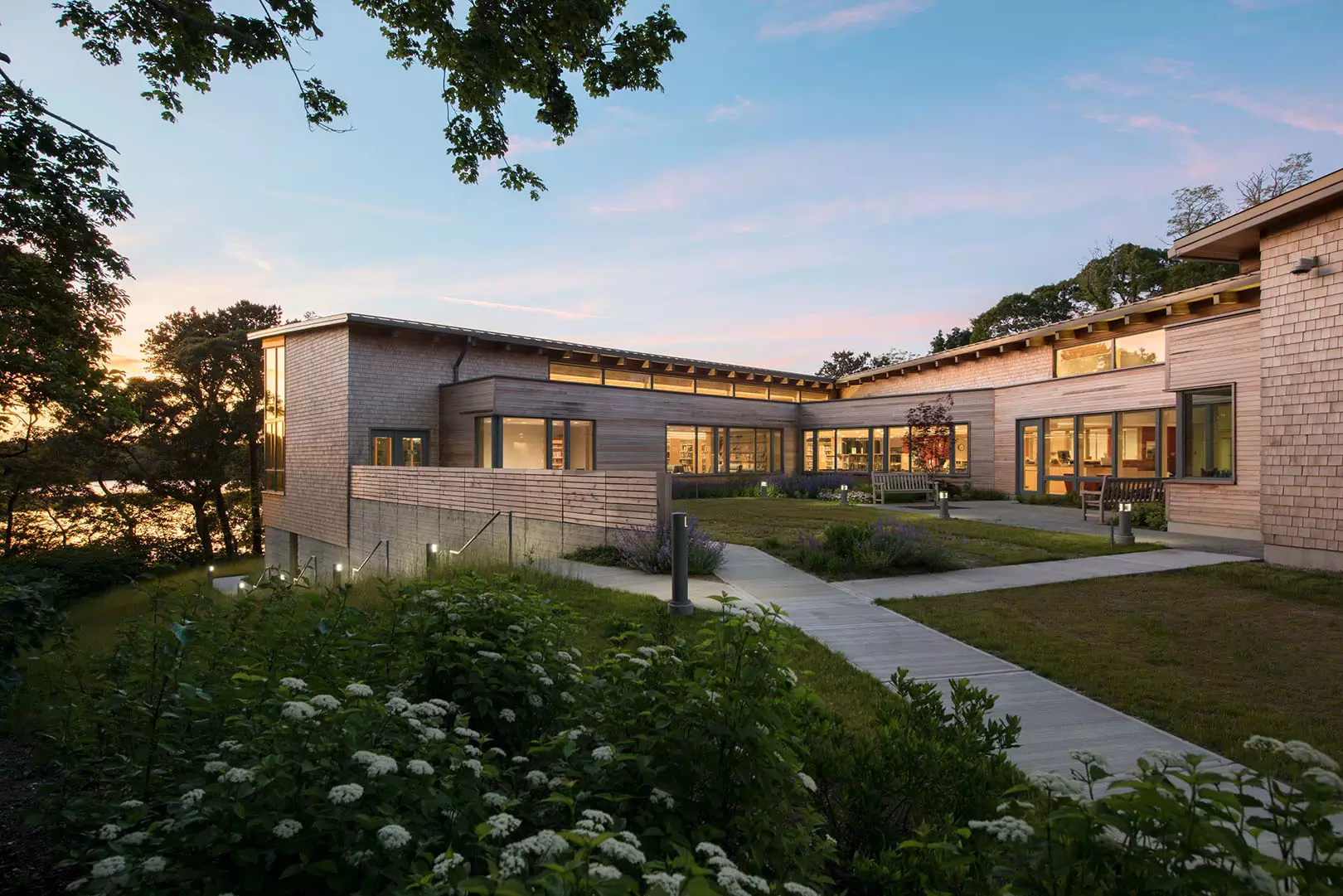
Since it opened in January 1898, the original one-room, 300-square-foot Eastham Public Library has undergone two additions as its collections and patron base grew. In order to meet the needs of today’s community, the design team replaced an outmoded 1980s addition with a sleek LEED Gold certified building that blurs the line between indoors and outdoors. The larger addition allowed for the library to double its size.
The majority of the new building mass was positioned at the rear of the site to reconcile the size of the addition to the original library, which is listed on the National Register of Historic Places. Overall, the building takes full advantage of the library’s waterfront setting while minimizing the visual impact on the small structure from the road. A palette of naturally weathering materials—cedar shingles and siding as well as bluestone flooring—relates the contemporary structure to its seaside location and vernacular of the historic building. Photo: Chuck Choi Photography via AIA
Hastings Public Library Renovation/Addition; Hastings, Nebraska | The Clark Enersen Partners
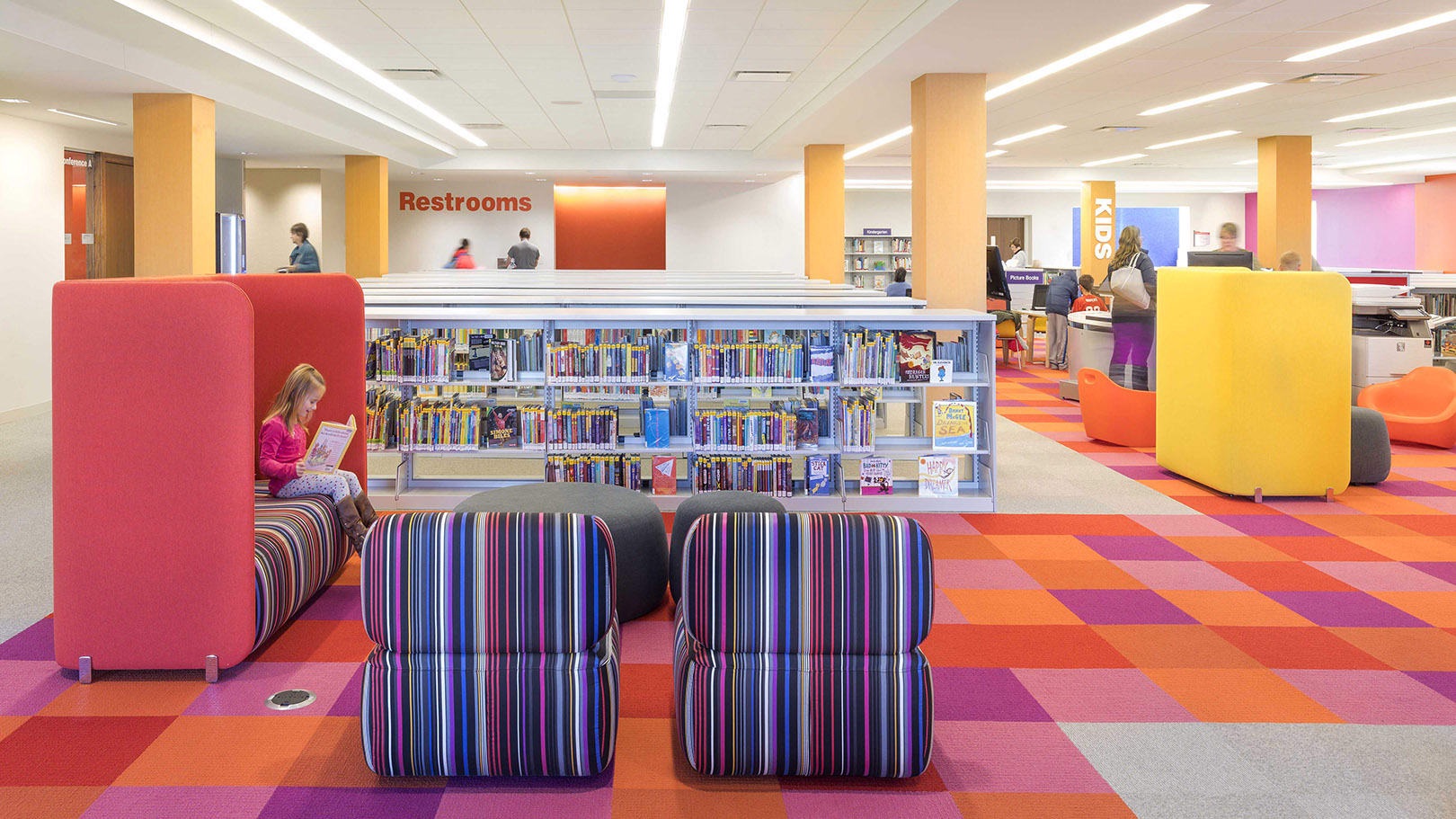
The renovation updates the existing 29,000-square-foot library, while adding 2,500 square feet of additional space. The floor plan was reconfigured to help the library meet 21st century standards for technology and programming, improve energy efficiency, and meet all life safety requirements. The lower level was remodeled to accommodate 2,900 square feet of flexible makerspace, as well as space for the archive collection. A new open stair has been included to promote visual and physical connectivity between first and second floors.
The relocation of the main entrance from the north side of the building to the southwest corner eliminates the need for steps, improves thermal performance, and provides a dynamic new face for the library. In addition, the project provides new, larger, and more dynamic areas for children and young adults; a new 150-person sub-dividable community room with a warming kitchen; and an outdoor patio adjacent to the popular library area. Photo: Paul Brokering via AIA
Laurel Branch Library; Largo, Maryland | Grimm + Parker Architects
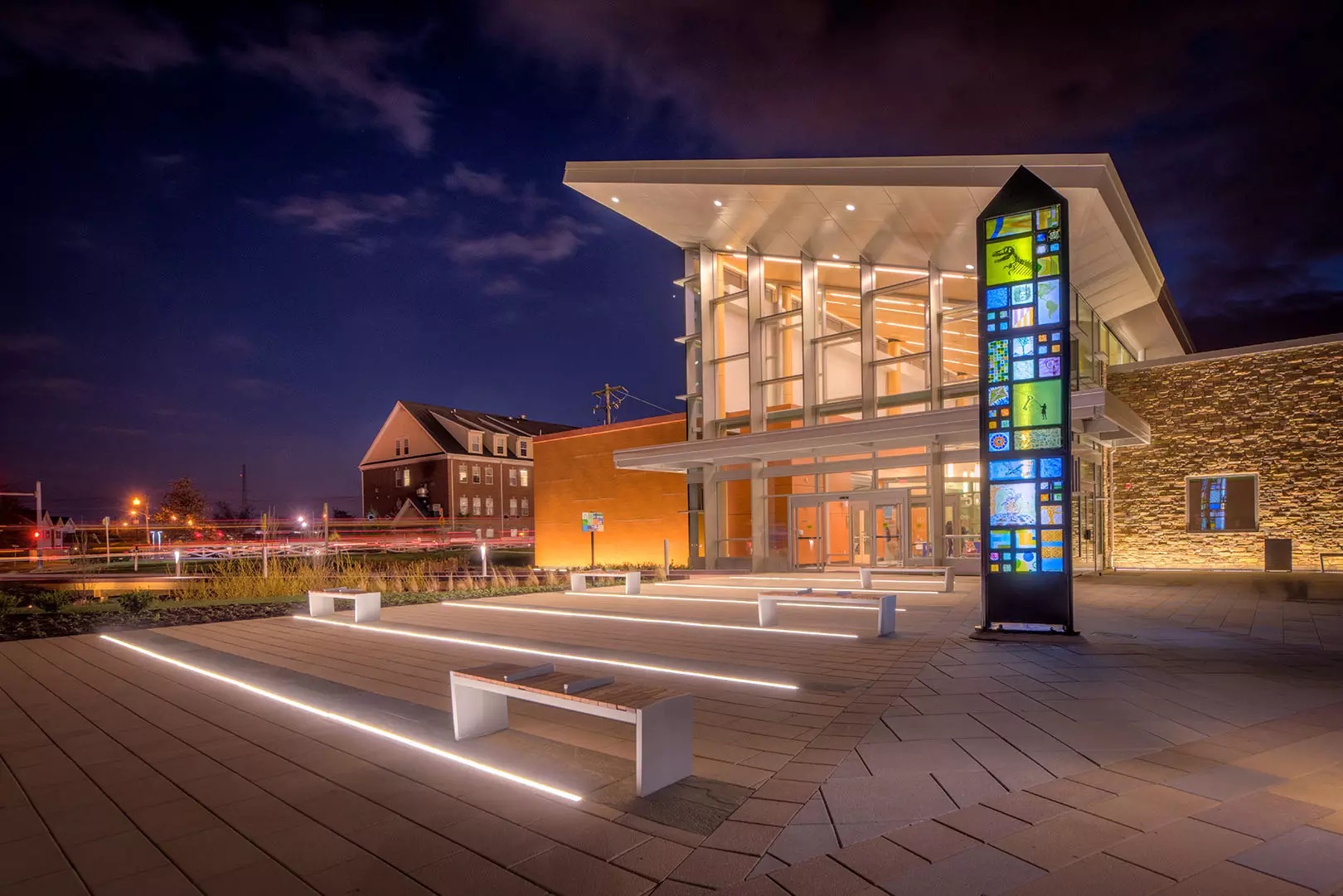
The 32,000-square-foot library replaces an existing facility, which was one of Prince George’s County’s most heavily used libraries. Its architecture provides a pedestrian-friendly solution that solidifies the library’s institutional presence while improving and respecting the park. The interior was designed to enhance the user experience through a replica paleontological dig site in the floor of the children’s area and public art pieces by local artists in other spaces. While not pursuing LEED certification, the LEED-NC v3 system provided an overarching design framework for its sustainable features. Outside, the site is a living laboratory for stormwater management and local ecosystems. Native drought-resistant plants were planted in large sweeps on the park and library grounds for maximum visual and functional impact. Flowering cherry trees echo nearby Washington, D.C., and a stand of native oaks reference the history of the site, once known as Oak Grove. Photo: Sam Kittner via AIA
Pico Branch Library; Santa Monica, California | Koning Eizenberg Architecture, Inc.
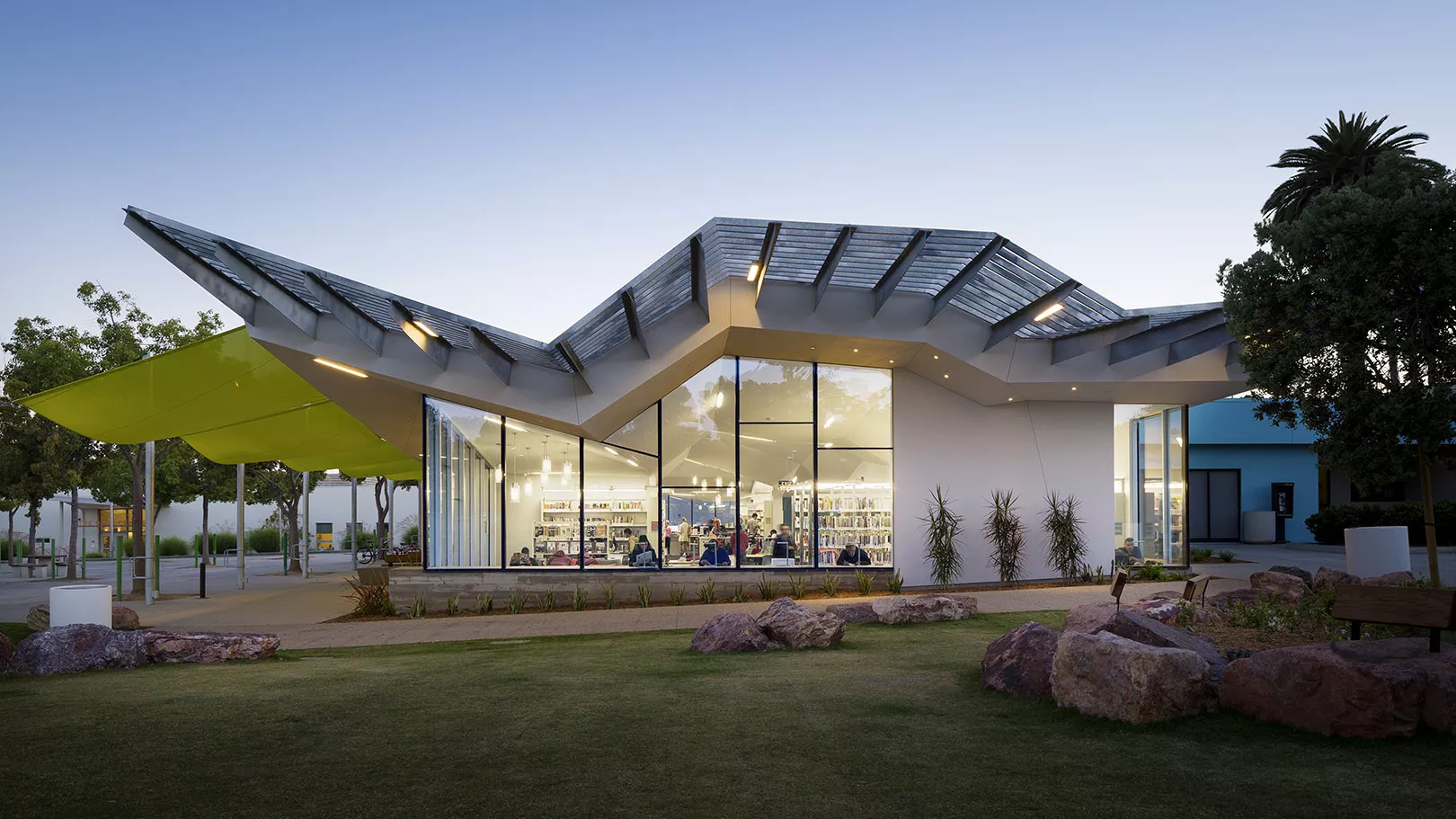
The library, located in the heart of Santa Monica’s Virginia Avenue Park, leverages its setting to encourage its use as both an educational resource and social gathering spot.
The nearly 9,000-sf library preserves the site’s existing green space and takes advantage of previously underused space to further activate the park’s event plaza. Sustainable features can be found throughout the LEED Platinum certified library, chief among them daylight harvesting and passive shading. Skylights and the library’s carved ceiling help maximize light and define the building’s architectural identity. Deep overhangs and canopies protect glass from direct sun and eliminate the need for interior shades.
Through its rainwater harvesting system, the library collects water from its roof and the roof of an adjacent building for storage in a 12,000-gallon cistern, where it is filtered and used to flush the library’s toilets. In the first six months of operation, the library increased its membership by more than 1,200 people and over 100,000 materials were checked out. Photo: Eric Staudenmaier via AIA
Tulsa City-County Central Library; Tulsa, Oklahoma | MSR Design
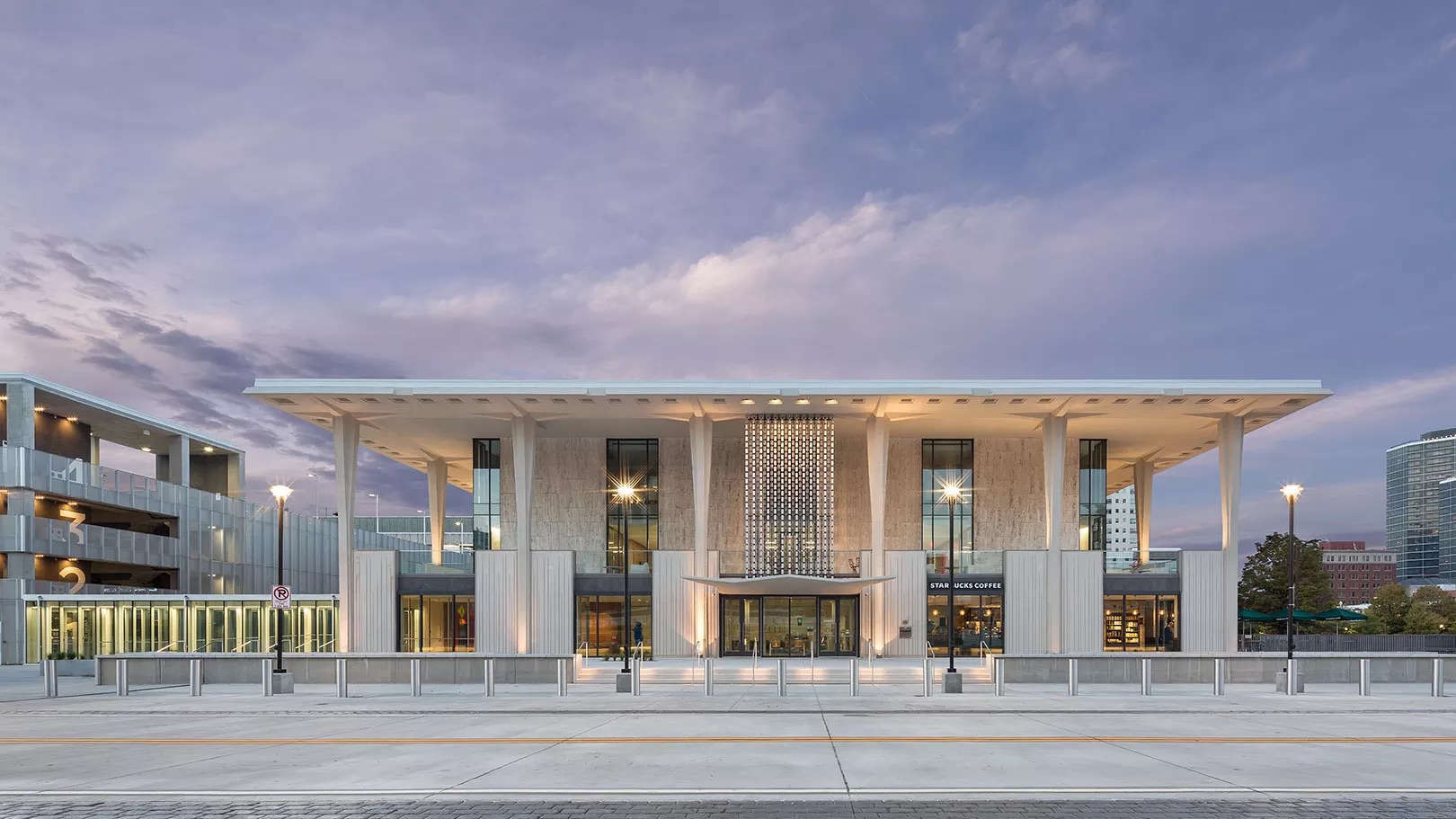
The design team approached the project with the goals of delivering a solution that responds to the needs of a 21st-century library while creating a destination that actively contributes to the city’s renewal. To that end, the project activates the exterior spaces, simplifies patron entry, and dramatically increases parking availability through a parking garage with an enclosed link to the library. Despite the addition of the 88,000-square-foot garage, the overall impervious surfaces on the site were reduced, alleviating stormwater runoff.
New cast stone panels, refurbished public art, and a thorough cleaning honor the library’s original 1965 design. Beyond the adult stacks and destination children’s area inside, the library features a mix of spaces where up to 140 people can meet and collaborate. The plaza itself, once tired and deserted, now features pervious pavers and ample seating surrounded by vegetation. Coupled with the library’s café, outdoor spaces provide seating for more than 400 people, providing regular meeting space before library hours begin. Photo: Lara Swimmer via AIA
Related Stories
| Aug 11, 2010
Community college’s hillside learning center
The Earl E. and Dorothy J. Dellinger Learning Resource Center at Southwest Virginia Community College in Richlands, Va., is the centerpiece of this mountainside school. Designed by Arlington, Va.-based The Lukmire Partnership, the 50,000-sf, two-story building connects the upper and lower campuses, which are separated by a 70-foot vertical grade change.
| Aug 11, 2010
Thom Mayne unveils ‘floating cube’ design for the Perot Museum of Nature and Science
Calling it a “living educational tool featuring architecture inspired by nature and science,” Pritzker Prize Laureate Thom Mayne unveiled the schematic designs and building model for the Perot Museum of Nature & Science at Victory Park in Dallas. The $185 million, 180,000-sf structure is 170 feet tall—equivalent to approximately 14 stories—and is conceived as a large...
| Aug 11, 2010
BIG beats out Foster and Hadid in design competition for Kazakhstan's National Library
Invited as one of five pre-selected architect-led teams that included Lord Norman Foster and Zaha Hadid, Copenhagen-based BIG was awarded first prize in an international design competition for the new National Library in Astana, Kazakhstan. The 33,000-square-meter facility will be organized as a “circular loop of knowledge” that allows for clear, intuitive orientation of the vast co...
| Aug 11, 2010
Broadway-style theater headed to Kentucky
One of Kentucky's largest performing arts venues should open in 2011—that's when construction is expected to wrap up on Eastern Kentucky University's Business & Technology Center for Performing Arts. The 93,000-sf Broadway-caliber theater will seat 2,000 audience members and have a 60×24-foot stage proscenium and a fly loft.
| Aug 11, 2010
Dallas Center for the Performing Arts opens
The Dallas Center for the Performing Arts, a new multi-venue center for music, opera, theater, and dance, will open this month, completing the 25-year vision of the Dallas Arts District. Foster + Partners, Rem Koolhaas, Joshua Prince-Ramus, and Skidmore Owings & Merrill are among the architecture firms involved in the development, which includes four venues unified by a 10-acre park.
| Aug 11, 2010
TCF Bank Stadium first new football stadium to get LEED certification
The University of Minnesota has received LEED Silver certification for its 50,805-seat TCF Bank Stadium, making it the first new football stadium in the country to achieve LEED status. Designed by Populous, Kansas City, Mo., the facility features a stormwater management system that captures and stores rainwater in an underground filtering system, where it is harvested, filtered, and drained int...
| Aug 11, 2010
Construction begins on Louisiana State Sports Hall of Fame
Heavy construction and foundation work has started on the new Louisiana State Sports Hall of Fame and Regional History Museum in Natchitoches, La. Designed by Trahan Architects, Baton Rouge, the $12 million, 28,000-sf museum will be clad in sinker cypress planks as a nod to the region’s rich timber legacy and to help control light, views, and ventilation throughout the facility.
| Aug 11, 2010
Modest recession for education construction
Construction spending for education expanded modestly but steadily through March, while at the same time growth for other institutional construction had stalled earlier in 2009. Education spending is now at or near the peak for this building cycle. The value of education starts is off 9% year-to-date compared to 2008.
| Aug 11, 2010
Manhattan's Pier 57 to be transformed into $210 million cultural center
LOT-EK, Beyer Blinder Belle, and West 8 have been selected as the design team for Hudson River Park's $210 million Pier 57 redevelopment, headed by local developer Young Woo & Associates. The 375,000-sf vacant passenger ship terminal will be transformed into a cultural center, small business incubator, and public park, including a rooftop venue for the Tribeca Film Festival.
| Aug 11, 2010
Opening night close for Kent State performing arts center
The curtain opens on the Tuscarawas Performing Arts Center at Kent State University in early 2010, giving the New Philadelphia, Ohio, school a 1,100-seat multipurpose theater. The team of Legat & Kingscott of Columbus, Ohio, and Schorr Architects of Dublin, Ohio, designed the 50,000-sf facility with a curving metal and glass façade to create a sense of movement and activity.


